After reintroducing ourselves to our wool clothing in Bogotá, we were looking forward to returning to sea level and the warm breezes of the Caribbean. I was expecting a continental version of some of the islands we visited this summer, but instead I found a place more redolent of the Brazilian ports we visited last year. The buildings and streets of the old town have a similar colonial feel to Recife and Paraty and the winds of the open ocean are evident in the bent palm trees along the shore.
- Cartageña buildings
- One of many impressive doorways
- Cartageña Alley
- El Portal
- Colonial Style
I am fairly sure that true Cartageñans only enter the centro histórico when distant cousins are visiting, but we enjoyed being immersed in the touristy streets and museums. Pedro de Heredia founded Cartagena de Indias, (as opposed to Cartageña, Spain) in 1533, overtaking a Carib settlement. For many years, Spanish Galleons transported Peruvian and Mexican gold from
Cartageña to Spain. Columbia’s answer to the Erie canal was the Canal del Dique, which connects Cartageña to a major inland River. In advance of our visit, I started reading One Hundred Years of Solitude, a fantastical novel by Cartageñan Gabriel Garcia Marquez. The nobel prize winner has an accessible style, which I enjoyed. The lives of his characters are interwoven with strange visions such as a woman who eats dirt and worms, butterflies forever following a visitor and a few instances of a bit too high a genetic relationship in their progeny.
- Street Market
- Overlooking Plaza
- Daily Life
- Cartageña
- Another Majestic Doorway
The walled city is a bit tough to navigate. The names on the street corners didn’t coincide with the paper map, Google maps, or Apple 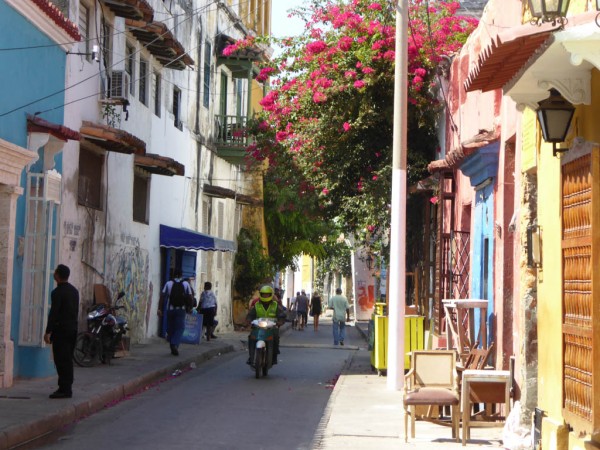 maps. We ran out of options. Fortunately, the area is small, and if you walk around in enough circles, eventually you will pass the building you are looking for. We visited The Museo Naval del Caribe. The exhibits looked interesting but all of the explanations are in Spanish and Rosetta Stone failed to cover the vocabulary of the great Columbian Naval battles. There were some short movies covering life aboard a battleship. It is always interesting to see the parallels between life aboard big and small ships; their anchor s just happen to be a bit bigger than Two Fish’s.
maps. We ran out of options. Fortunately, the area is small, and if you walk around in enough circles, eventually you will pass the building you are looking for. We visited The Museo Naval del Caribe. The exhibits looked interesting but all of the explanations are in Spanish and Rosetta Stone failed to cover the vocabulary of the great Columbian Naval battles. There were some short movies covering life aboard a battleship. It is always interesting to see the parallels between life aboard big and small ships; their anchor s just happen to be a bit bigger than Two Fish’s.
- Museo Naval del Caribe
- Great Captains of the Sea
- If we only knew what it said
- Not at the museum
The Museo de Arte Moderno de Cartagena de Indias, was an easier place to visit, as interpretations of art in any language go over my head. One of the rooms was devoted to Enrique Grau, a Cartageñan artist, born in 1920.
- Grau Triptych
- Grau Statue
- Modern Grau
- Grau Self-portrait, painted while in NYC
The fascinating part was how varied his work was, both the mediums and subjects.
The final museum we visited was the Museo del Oro Zenú, a smaller version of the one we missed in Bogotá.
Relics from the Zenú dated back over 2000 years and were amazingly intricate. As you might imagine, a gold museum required an armed guard and a vault door. “Solo diez minutos,” the guard told us. The Naval Museum needed no such security.
- The ocean calls
- Walk to Getsemaní neighborhood
- Still a major port
- At Club de Pesca Yacht Club
- Club de Pesca
After being
steeped in culture and food for a few days, we decided it was time for a bit of exercise, and headed to Bodytech in the modern,
Bocagrande section of town. The mall also contains a wonderful salad spot and a multiplex. Holá Mission Impossible!
The mall display corner shows an example of the Moais we will be visiting on Easter Island next week. Perhaps we should skip the long flight and take our selfies here?
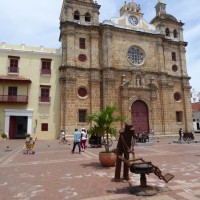
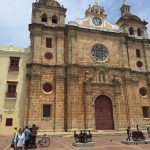
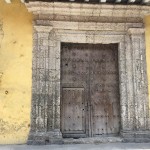
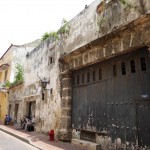
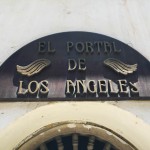
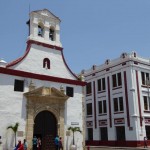
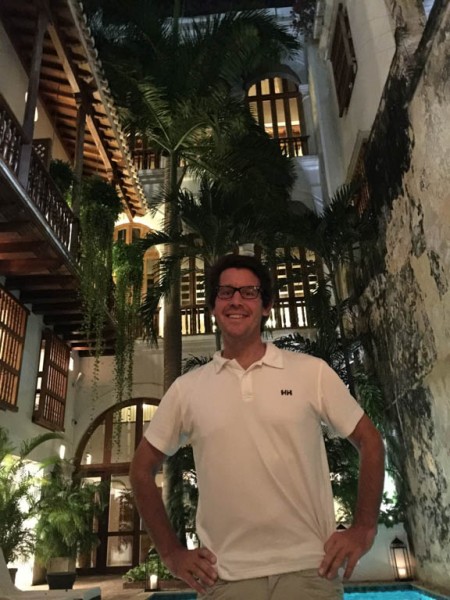

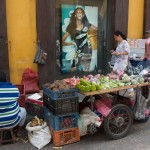
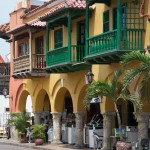
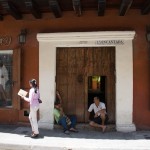
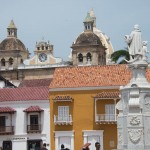
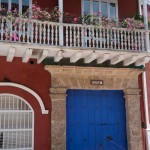

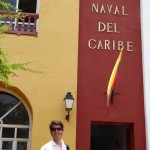
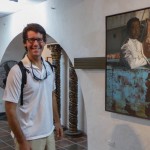
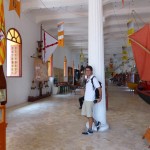


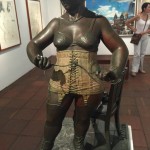
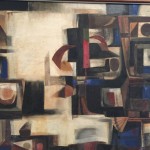

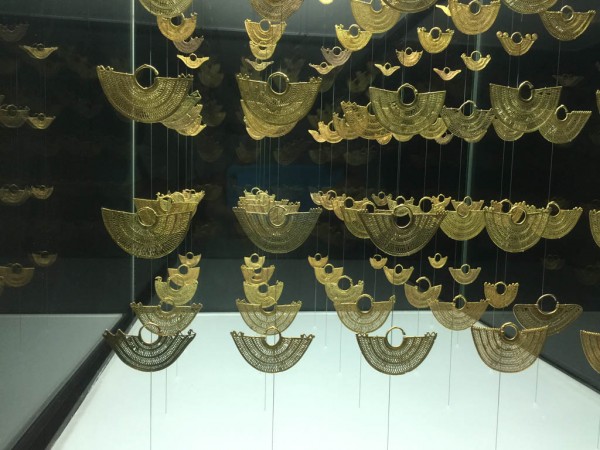
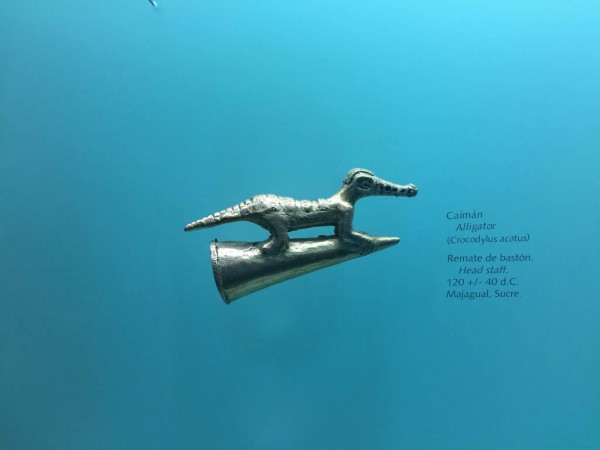
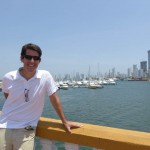
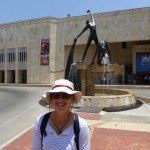
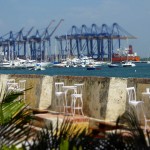

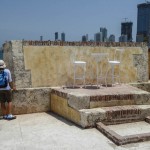



2 Responses to Cartageña